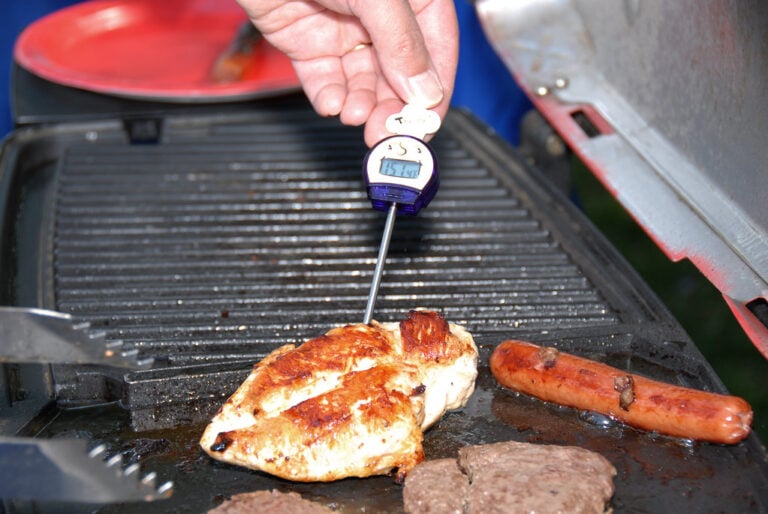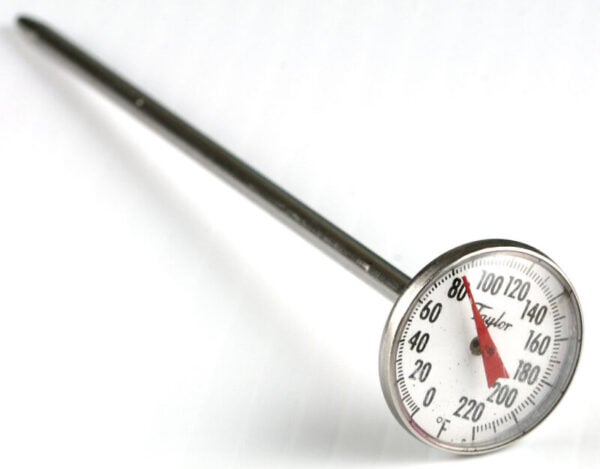What Does HACCP Help a Food Business Do?
Food safety can be a complicated process, with many different factors such as allergen advice, labelling requirements, and bacterial growth. Getting any aspect wrong can have devastating consequences for businesses, such as negative PR/brand impact, costly withdrawals and recalls, and severe injury to the consumer, which would likely result in legal repercussions.
This issue has become even more critical in recent years, with the Food Standards Agency (FSA) noting in a five-year study that cases of food-related illness have more than doubled in the last decade, reaching 2.4 million cases from 1 million in 2009.
As daunting as food safety can be for businesses, to make the process easier a management system known as HACCP has been developed based on seven steps that allow for potential hazards to be closely identified, monitored, and dealt with appropriately.
It has been adopted by many countries since its inception in the 60s and is now a legal requirement in most European countries for food businesses including the UK, so it’s essential to understand how HACCP works and how to develop your own plan if running a business.
Early History of HACCP

HACCP stands for ‘Hazard Analysis & Critical Control Point’, with the acronym first coined during research into food safety carried out by NASA, the Pillsbury Company, and US army laboratories in the 1960s.
The purpose of this collaboration was to develop new food safety methods, as astronauts being ill in space could result in death and jeopardise any current missions.
As a result, it was essential for all potential food safety concerns to be eliminated. To achieve this the concept of critical control points was created which are steps in the manufacturing and production process that food businesses can control to eliminate potential hazards. A simple example of a control point would be Food Storage, where products need to be kept at a specific temperature to stop bacterial growth. In the UK it’s a legal requirement for perishable foods to be refrigerated at 8ºC or below.
The early version of HACCP was presented to the National Conference on Food Production in 1971, and after many changes throughout the years, was officially endorsed by the World Health Organisation in 1983. The National Advisory Committee on Microbiological Criteria for Foods (NACMCF) then developed this system further in 1992 in a report that underlined the seven principles of HACCP that are still in use today.
Seven Principles of HACCP

The seven principles of HACCP outline seven preventative steps that businesses should carry out to ensure no physical, chemical or biological hazards contaminating food products are sold. While businesses will aim to carry out these HACCP steps in different ways depending on their function, the core objective of each principle will stay the same.
1. Perform a Hazard Analysis
To start the HACCP plan, a review of all the steps in the production process is undertaken to identify potential areas where hazards are most likely to occur.
2. Determine Critical Control Points (CCPs)
The business will then consider the potential hazards listed in Principle 1, and identify those which they can control, identifying steps that can be taken to prevent hazards in the future. For example, acidic foods may cause corrosion with certain materials, but taking note of the pH level can allow businesses to identify the correct materials needed for packing different foods.
3. Set Critical Limits
Maximum and minimum values for the control point are established to prevent physical, chemical, or biological hazards, known as the HACCP critical limits. Examples include storing food below freezing point or cooking food above a specific temperature to kill bacteria.
4. Establish a Monitoring System
After the food business identifies a control point alongside critical limits, they must then identify a method for monitoring these. Monitoring factors to establish include monitoring frequency and the types of checks that will be carried out.
5. Establish Corrective Actions
When a Critical Control Point (CCP) exceeds its critical limits, corrective actions will need to be in place to ensure the Control Point is either within safe parameters or that the business removes the from production.
6. Establish Record-keeping Procedures
Details of the plan will need to be recorded, including information such as the CCPs, their Critical Limits, and any deviations from the standard HACCP process. These records are a legal requirement in the UK, and a visiting Health Inspector may ask to see them.
7. Establish Verification Procedures
Finally, food businesses must review the overall HACCP plan regularly to make sure they are carrying out all principles correctly, making sure they are successfully dealing with any issues, and capturing and recording accurate information.
Carrying out hazard analysis is an effective way to maintain proper food safety & hygiene, and we hope this guidance has made the process clearer. For additional help, the UK government has launched the ‘MyHACCP’ website, which is full of resources to help businesses create their HACCP plan.
Other content you might find interesting:
LiberEat - Allergen Error Detection Software
Food allergen rules and regulations continue to change and evolve. Food businesses in production, hospitality, catering, and retail must be vigilant when working with ingredients, products, and dishes containing allergens and exercise due diligence when providing ingredient and allergen information to consumers. Successful allergen management is a big part of Food Safety professionals creating a culture of care and excellence within their teams.
LiberEat offers a second line of defence for food businesses by detecting errors, allergens, and other harmful ingredients with our proprietary Allergen Detection Software. Food businesses can apply this technology directly to identify errors in allergen communications, preventing the risk of injury to consumers. Contact us today to learn more about how we can support your existing food safety processes.
LiberEat works closely with food businesses to ensure consumers are safe and healthy when consuming your produce.

